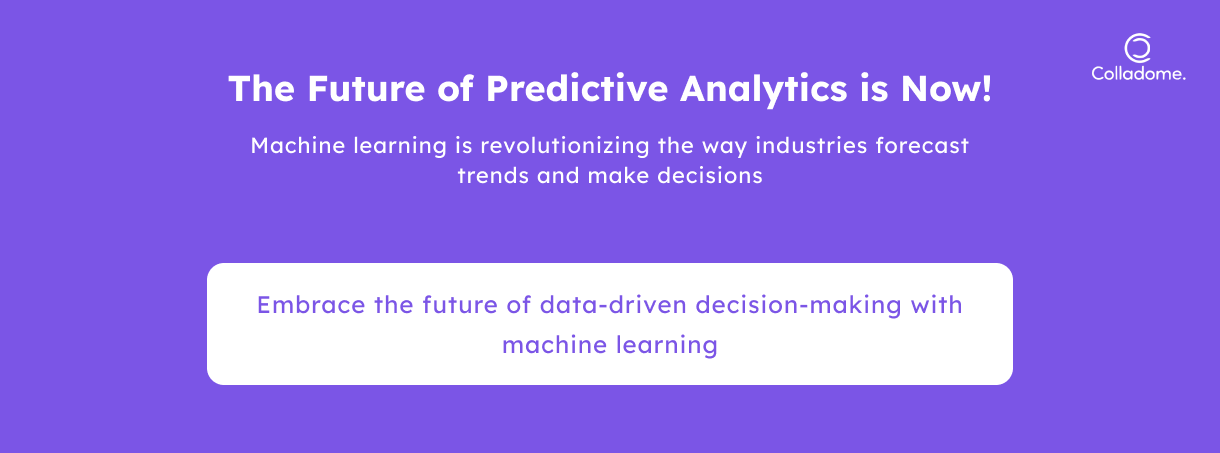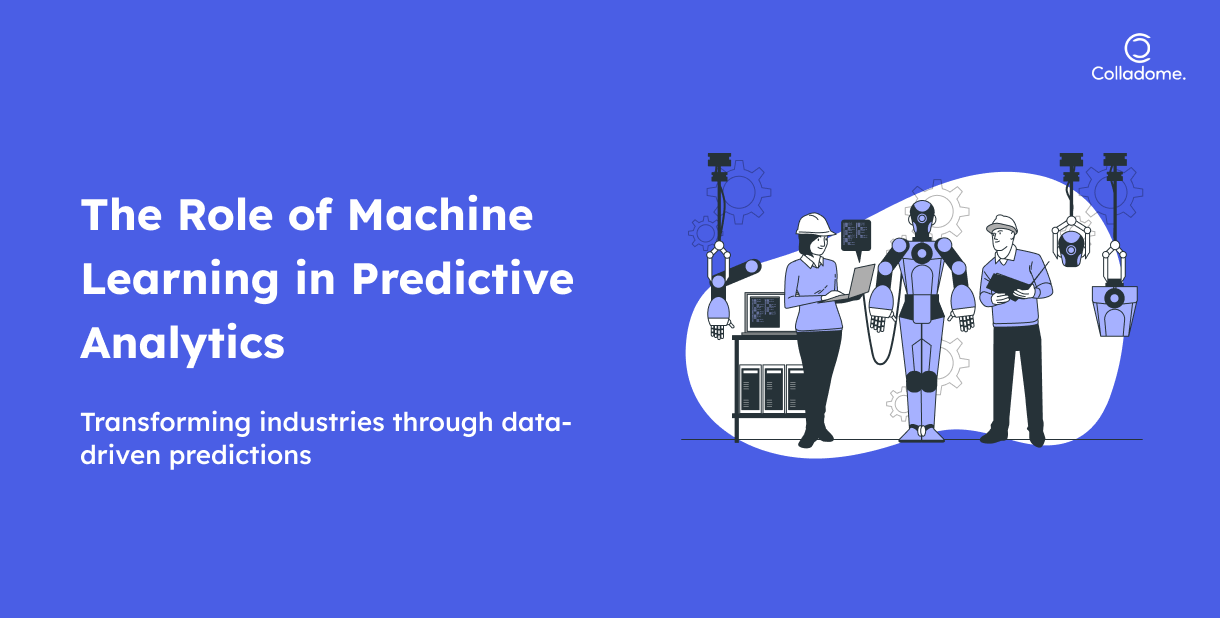Predictive analytics has become a cornerstone of modern decision-making, empowering industries to forecast trends, mitigate risks, and optimize strategies. At the heart of this transformative capability lies machine learning (ML)—an advanced tool driving data predictions with unprecedented accuracy. From retail to healthcare, the fusion of machine learning and predictive analytics is reshaping industries, unlocking new possibilities for business forecasting and operational efficiency.
Why Machine Learning is Crucial for Predictive Analytics

Predictive analytics isn’t new, but traditional statistical models often struggle with the complexity and scale of modern data. This is where machine learning shines:
- Handles Big Data: With the explosion of unstructured and structured data, ML can process massive datasets quickly and accurately.
- Improves Accuracy: Algorithms like neural networks and decision trees learn from patterns and continually refine predictions.
- Adaptability: Unlike static models, ML algorithms adjust dynamically to new data inputs, staying relevant.
- Scalability: Whether it’s predicting demand for a small business or forecasting global market trends, ML scales seamlessly.
Did You Know?
According to a report by Gartner, 75% of enterprises will operationalize AI by 2025, driven largely by advancements in ML for predictive analytics.
What is Machine Learning in Predictive Analytics?

Machine learning refers to the use of algorithms that can learn from data without being explicitly programmed. When integrated into predictive analytics, it identifies patterns, correlations, and trends that might otherwise go unnoticed.
Key ML Algorithms Used in Predictive Analytics

- Linear Regression: Predicts outcomes based on linear relationships between variables.
- Random Forests: Combines multiple decision trees for robust predictions.
- Neural Networks: Ideal for identifying non-linear relationships in large datasets.
- Support Vector Machines (SVM): Effective for classification tasks.
- K-Means Clustering: Groups similar data points, aiding segmentation and trend analysis.
Quick Fact: Companies using predictive analytics see an average ROI of 10.7%, with ML algorithms playing a pivotal role in these res
How Machine Learning Enhances Predictive Analytics

- Improves Accuracy
ML algorithms continuously refine their predictions, learning from historical data to provide near-real-time accuracy.- Example: Retailers use ML to predict inventory needs, reducing waste by up to 20%.
- Speeds Up Decision-Making
With real-time data processing, ML-enabled predictive analytics accelerates insights delivery, allowing faster, informed decisions. - Personalization
From marketing campaigns to healthcare treatments, ML tailors predictions to individual needs.- Example: Netflix uses ML to recommend shows, improving customer retention by over 90% (Source: Business Insider).
- Handles Complexity
ML can identify patterns across multiple variables, uncovering insights from datasets too complex for traditional methods.
Real-World Applications of Predictive Analytics with Machine Learning
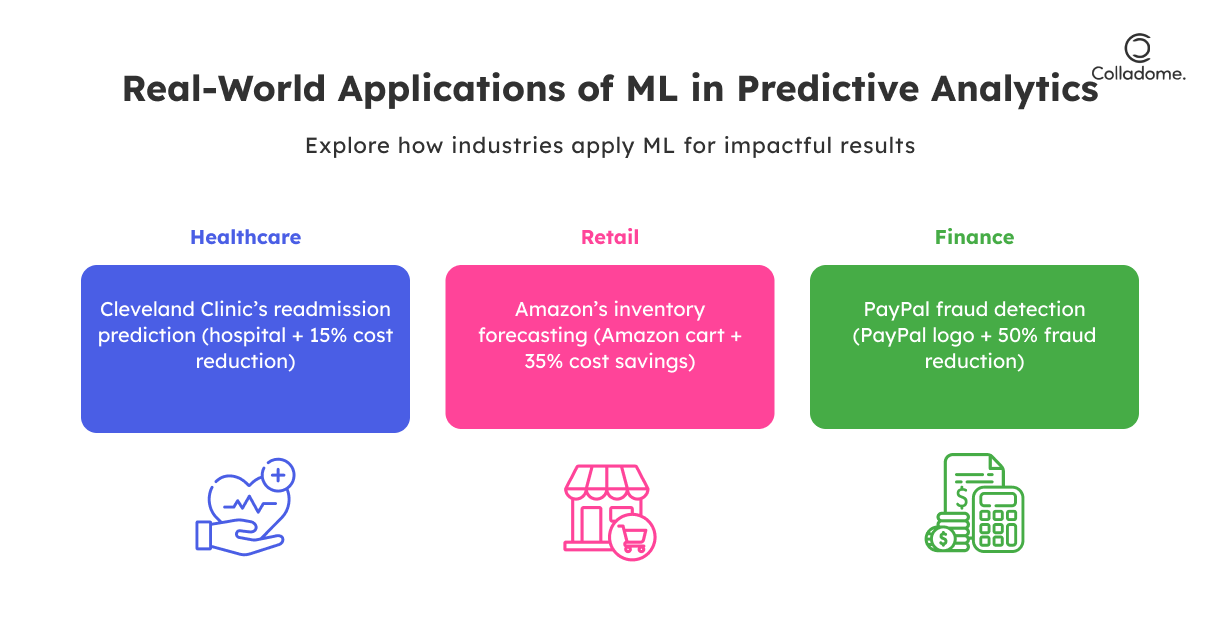
1. Healthcare: Predicting Patient Outcomes
- Case Study: The Cleveland Clinic leverages ML to predict readmission risks for cardiac patients, reducing hospital costs by 15%.
- Impact: Accurate predictions allow personalized treatments and preventive care.
2. Retail: Demand Forecasting
- Case Study: Amazon uses ML to forecast inventory needs, achieving a 35% reduction in holding costs while maintaining product availability.
- Impact: Better demand predictions ensure seamless customer experiences.
3. Finance: Fraud Detection
- Case Study: PayPal employs ML to detect fraudulent transactions, reducing fraud rates by 50%.
- Impact: Real-time analytics protect customers and reduce financial losses.
Facts and Figures on ML and Predictive Analytics
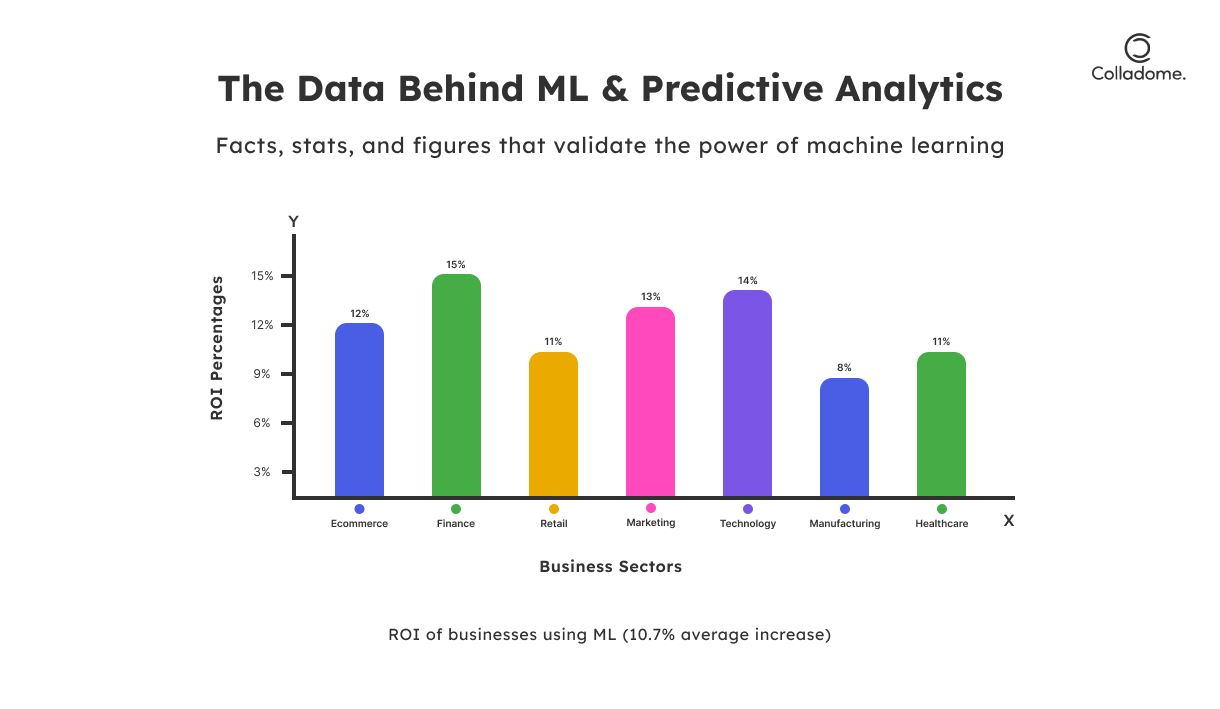
| Metric | Value | Source |
| Increase in ROI for businesses | 10.7% | Deloitte |
| AI adoption by 2025 | 75% of enterprises | Gartner |
| Cost savings in inventory holding | 35% (Amazon) | Forbes |
| Fraud reduction in finance | 50% | PayPal Case Study |
Future Predictions for ML in Predictive Analytics
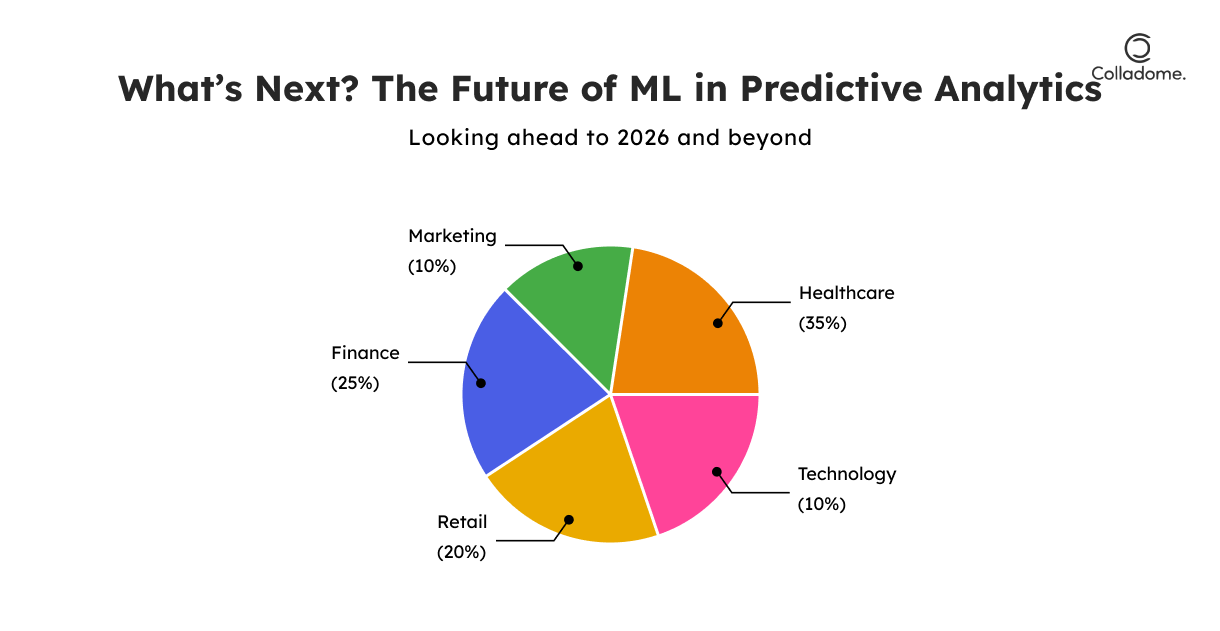
| Trend | Expected Impact | Timeline |
| AI-driven personalization | 80% of customer interactions to be AI-driven | By 2026 |
| Expansion into new industries | Predictive analytics to enter agriculture, legal tech | By 2027 |
Conclusion
Machine learning has revolutionized predictive analytics, transforming industries by improving accuracy, scalability, and efficiency. From forecasting sales to detecting fraud, ML’s role in business forecasting and decision-making is invaluable. As organizations harness its potential, the future promises even greater innovation, with ML algorithms at the forefront of predictive capabilities.
If you’re exploring how predictive analytics with machine learning can elevate your business strategy, the time to act is now. Embrace the power of data predictions and prepare to lead in an AI-driven world!
